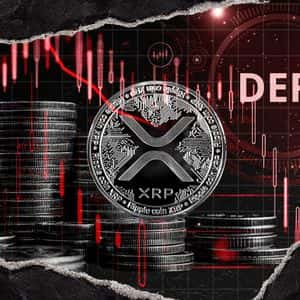BitcoinWorld Urgent Concerns: EU Crypto Oversight Under ESMA Sparks Industry Backlash The European crypto industry is sounding the alarm bells. A new proposal from the European Commission (EC) aims to centralize EU crypto oversight under the European Securities and Markets Authority (ESMA), a move that is meeting fierce 0 potential shift in regulatory power has sparked an urgent debate about the future of innovation and growth within Europe’s rapidly evolving digital asset 1 Centralized EU Crypto Oversight Raises Eyebrows The European Commission is currently drafting a proposal to grant ESMA significant supervisory authority over the crypto 2 the intention might be to streamline regulation and enhance investor protection, many in the industry view this as a potentially stifling development.
ESMA’s Role: ESMA is an EU financial regulatory agency responsible for contributing to the stability and effectiveness of the financial 3 it direct supervisory power over crypto would be a significant expansion of its 4 Proposal’s Scope: The draft suggests that ESMA would handle crucial aspects like licensing and ongoing supervision for crypto firms across the 5 centralized approach to EU crypto oversight is seen by many as a step that could inadvertently harm the very sector it seeks to 6 Innovation at Risk with Centralized EU Crypto Oversight? One of the loudest voices against the proposal comes from Faustine Fleuret, head of public policy at DeFi lending protocol 7 argues that excessive regulatory authority vested in ESMA could significantly slow the pace of innovation within Europe’s crypto and fintech 8 highlights several key concerns: Resource Drain: If ESMA were to handle all licensing and supervision, it would require vast resources, potentially leading to bottlenecks and 9 Flexibility: A centralized body might struggle to adapt quickly to the fast-evolving nature of crypto, reducing decision-making speed for startups and emerging 10 on Early-Stage Companies: For nascent projects, close cooperation with national regulators is often essential.
A shift to a distant, centralized authority could sever these vital local 11 concerns suggest that while uniform EU crypto oversight might seem efficient on paper, its practical application could hinder the agility required for technological 12 Might Centralization Affect Europe’s Crypto Future? The debate around this proposed EU crypto oversight model extends beyond immediate operational 13 touches upon Europe’s strategic position in the global crypto 14 continent has often aimed to be a leader in balanced crypto regulation, exemplified by the Markets in Crypto-Assets (MiCA) regulation. However, a highly centralized approach could inadvertently push innovative projects and talent towards jurisdictions with more agile or less burdensome regulatory 15 industry fears that instead of fostering growth, this move could lead to 16 a competitive edge means balancing robust regulation with an environment that encourages experimentation and 17 current proposal for EU crypto oversight , according to its critics, leans too heavily on the former at the expense of the 18 a Balance: The Path Forward for EU Crypto Oversight The pushback from the crypto industry isn’t necessarily against regulation itself, but rather against a specific model of 19 stakeholders advocate for a more nuanced approach that leverages existing national expertise while still achieving harmonized 20 considerations for a balanced framework include: Subsidiarity: Allowing national regulators to handle day-to-day supervision for smaller entities, while ESMA focuses on cross-border issues or larger, systemic 21 Guidelines: Providing transparent and predictable rules that support innovation rather than creating 22 Dialogue: Continuous engagement with industry participants to understand their operational realities and incorporate feedback into policy-making.
Ultimately, the goal of effective EU crypto oversight should be to protect consumers and maintain financial stability without inadvertently stifling the very innovation that drives the sector 23 ongoing discussions will be crucial in shaping a regulatory framework that serves both purposes. Conclusion: The Crossroads of Regulation and Innovation The European Commission’s proposal to centralize EU crypto oversight under ESMA has ignited a significant debate within the crypto 24 the ambition for a cohesive regulatory environment is understandable, concerns about innovation, resource allocation, and the agility of startups are valid and demand careful 25 challenge now lies in crafting a regulatory framework that can safeguard market integrity and consumer interests, while simultaneously nurturing Europe’s potential as a hub for digital asset 26 outcome of this pushback will undoubtedly shape the trajectory of crypto in the EU for years to 27 Asked Questions (FAQs) What is ESMA and what is its proposed role in EU crypto oversight?
ESMA, the European Securities and Markets Authority, is an EU financial regulatory 28 European Commission’s draft proposal seeks to grant ESMA supervisory power over the crypto sector, including licensing and ongoing supervision of crypto firms across the 29 is the crypto industry opposing this centralization of EU crypto oversight? The industry, represented by figures like Faustine Fleuret of Morpho, fears that centralizing all regulatory authority under ESMA could slow innovation, reduce decision-making flexibility for startups, require vast resources, and diminish the essential role of national regulators for early-stage 30 might this proposal impact crypto innovation in Europe?
Critics argue that a centralized approach might lead to slower adaptation to new technologies, create bureaucratic bottlenecks, and potentially deter innovative projects from establishing or growing within the EU, thereby hindering Europe’s competitiveness in the global crypto 31 is MiCA, and how does it relate to this discussion? MiCA (Markets in Crypto-Assets) is a landmark EU regulation designed to create a comprehensive regulatory framework for 32 MiCA provides the rules, the current debate focuses on who will supervise these rules – a centralized ESMA or a more distributed approach involving national regulators, especially concerning EU crypto 33 alternative approaches are being suggested for EU crypto oversight?
Industry stakeholders suggest a more nuanced approach, advocating for national regulators to handle day-to-day supervision for smaller entities, while ESMA focuses on broader, cross-border or systemic 34 also call for clear guidelines and continuous dialogue with the 35 you found this article insightful, consider sharing it with your network! Stay informed on crucial developments shaping the future of digital 36 learn more about the latest crypto market trends, explore our article on key developments shaping the EU crypto oversight landscape and its impact on institutional 37 post Urgent Concerns: EU Crypto Oversight Under ESMA Sparks Industry Backlash first appeared on BitcoinWorld .
Story Tags

Latest news and analysis from Bitcoin World



